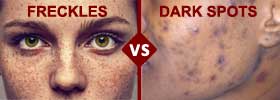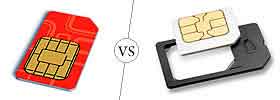Difference between Fleas and Lice
Key difference: Fleas are tiny, wingless, parasitic insects that live and feed on blood from humans, dog, cats, and other animals. Head lice are tiny, wingless, parasitic insects that live and feed on blood from your scalp. There are other types of lice, including body lice, which affects the body and pubic lice, which affects the pubic area.
 Both fleas and lice are parasitic infestation that can often trouble humans: adults and children, as well as animals.
Both fleas and lice are parasitic infestation that can often trouble humans: adults and children, as well as animals.
Fleas are tiny, wingless, parasitic insects that live and feed on blood from humans, dog, cats, and other animals. They are agile, usually dark colored with tube-like mouth-parts adapted to feeding on the blood of their hosts. Their legs are long, the hind pair well adapted for jumping: a flea can jump vertically up to 7 inches (18 cm) and horizontally up to 13 inches (33 cm).
Fleas commonly affect dogs and cats, but may also be found on humans and other available animals, especially if there is no easy excess to the dogs or cats or the cats and dogs have been moved out of the house.
Head lice are tiny, wingless, parasitic insects that live and feed on blood from your scalp. There are other types of lice, including body lice, which affects the body and pubic lice, which affects the pubic area. The head lice are the most common form of infestation that most humans face.
They commonly affect preschool and elementary school-aged children, who unknowingly infect each other and others close to them, such as family members. However, getting a head lice infestation is not a sign of bad personal hygiene or an unclean living environment. It is an itchy infestation commonly spread through close personal contact and by sharing personal belongings.
While, both are parasitic infections, there are certain differences between the two. The main difference is that the lice mainly affects humans, but may also affect pets. Comparatively, fleas mainly affect pets but may also affect humans.
Also, the shape of the body differs between the two. Fleas generally have a reddish brown flat body shape as compared to the dark grey oval body shape of a louse. The flea also has longer hind legs and is capable of jumping higher and faster than the lice. The louse, on the other hand, scuttles very fast, like a crab, as oppose to jumping. The louse had has pincers at the end of the legs, similar to crabs, which allow them to hold on the hair. Hence, lice are harder to find and dislodge from the hair.
 They also differ in the manner in which they feed. A flea mainly survives on the blood of the host, whereas the lice can survive on blood, dead skin particles, among other things.
They also differ in the manner in which they feed. A flea mainly survives on the blood of the host, whereas the lice can survive on blood, dead skin particles, among other things.
Also, the fleas leave a series of bites when they feed. The bites generally result in the formation of a slightly raised, swollen itching spot with a single puncture point at the center, which is similar to a mosquito bite. The bites often appear in clusters or lines of two bites, and can remain itchy and inflamed for up to several weeks. Lice, on the other hand, do not usually leave bite marks in the skin. They just cause itchiness in the scalp. Some types of lice may leave small, red bumps on the scalp, neck, and shoulders, which may become crusty and ooze. However, these rarely appear.
Furthermore, lice spend their entire lives linked to human beings, usually a single human. Fleas, on the other hand, move from one host to another, whether they are humans or animals. Hence, fleas are capable of spreading diseases from one host to another. Fleas on rats are in fact credited with spreading the bubonic plague. In contrast, lice cannot carry and spread diseases.
A detailed comparison between fleas and lice:
|
|
Fleas |
Lice |
|
Kingdom |
Animalia |
Animalia |
|
Phylum |
Arthropoda |
Arthropoda |
|
Class |
Insecta |
Insecta |
|
Subclass |
Pterygota |
Pterygota |
|
Infraclass |
Neoptera |
Neoptera |
|
Superorder |
Endopterygota |
Exopterygota |
|
Order |
Siphonaptera |
Phthiraptera |
|
Species |
Over 2,000 species, including: Cat flea Dog flea Human flea Moorhen flea Northern rat flea Oriental rat flea |
Over 3,000 species |
|
Other names |
Aphaniptera |
Pediculosis capitis |
|
Nature |
Parasite – living organism |
Parasite – living organism |
|
Description |
Fleas are tiny, wingless, parasitic insects that live and feed on blood from humans, dog, cats, and other animals. They are agile, usually dark colored with tube-like mouth-parts adapted to feeding on the blood of their hosts. Their legs are long, the hind pair well adapted for jumping: a flea can jump vertically up to 7 inches (18 cm) and horizontally up to 13 inches (33 cm). |
Head lice are tiny, wingless, parasitic insects that live and feed on blood from the scalp. One louse can lay as many as 100 eggs. A louse can live up to 30 days on a human scalp, and up to 2 days without food or nutrition. The nits (eggs) can live up to 2 weeks with out nutrition but are susceptible to temperature.
|
|
Affects |
Fleas prefer to live on dogs and cats, but may also be found on humans and other available animals, especially if there is no easy excess to the dogs or cats. |
Head lice are a very common problem, affecting millions of people each year, especially preschool and elementary school-aged children and their close contacts. |
|
Causes |
Fleas breed close to the resting and sleeping places of the host, in dust, dirt, rubbish, cracks in floors or walls, carpets, animal burrows and birds’ nests. High humidity is required for development. The larvae feed on organic matter such as the feces of the host, small dead insects and undigested blood expelled by adult fleas. The adults go out in the night and feed of the blood of humans or animals. |
Spreads through close personal contact, especially head to head contact and by sharing personal belongings, such as caps, hats and scarves, brushes and combs, hair decorations, such as barrettes, and headphones. It may even rarely spread through home furnishings, such as towels, clothing, blankets, pillows, upholstered furniture. |
|
Risk factors |
The flea species does not usually remain on the person after feeding and by day it rests in cracks, crevices, carpets and bedding. Hence, it can be hard to find and to pin point a flea infestation. Also, the eggs can hatch after weeks of being laid and start the infestation anew. |
Females of all ages get head lice more often than males do. The greatest risk factor for getting head lice is coming into contact with someone who already has lice. Cleanliness and personal hygiene have little bearing on whether one gets lice.
|
|
Symptoms |
Their bites can cause irritation, serious discomfort and loss of blood. |
Intense itching, adult lice on scalp, lice eggs (nits) on hair shafts. |
|
Severity |
Severe symptoms may include hives, severe itching, small bumps that itch and may bleed, and/or allergic reactions to flea saliva resulting in rashes and/or impotence. |
Lice may cause one to scratch the head so vigorously that the skin breaks. These scratches may get infected. |
|
Treatment |
An effective repellent applied to skin and clothing, prevents fleas from attacking for a few hours. Dusting clothing with insecticide powder, or by using insecticide-impregnated clothing, keeping houses well swept and floors washed, treatment of floors with detergents, insecticides or a solution of naphthalene in benzene, and spraying or dusting insecticides into cracks and crevices, corners of rooms and areas where fleas and their larvae are likely to occur. |
Comb wet hair with a fine-toothed or nit comb to remove lice from wet hair. Repeat every three to four days for at least two weeks. Nonprescription shampoo that's specifically formulated to kill lice. |
|
When to see a doctor |
If the person faces any severe reaction to the flea bites or if the bites are persistent and refuse to heal or go away. |
If nonprescription shampoo doesn't kill the lice, the doctor can prescribe a stronger, prescription shampoo. If scratches are infected. |
Image Courtesy: onewaypestcontrol.com, micropest.com









Add new comment